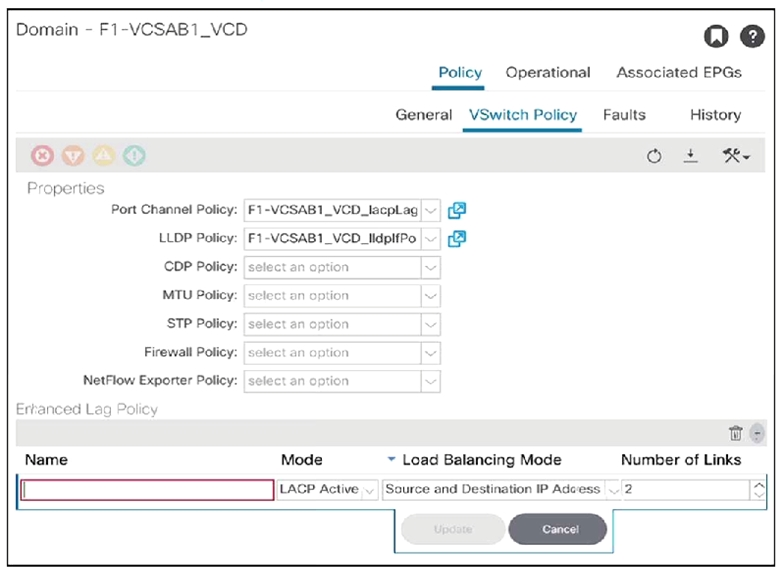


Refer to the exhibit. An engineer configures the Cisco ACI fabric for VMM integration with ESXi servers that are to be connected to the ACI leaves. The server team requires the network switches to initiate the LACP negotiation as opposed to the servers. The LAG group consists of two 10 Gigabit Ethernet links. The server learn also wants to evenly distribute traffic across all available links. Which two enhanced LAG policies meet these requirements? (Choose two.)
Rododendron2
Highly Voted 2 years agodesignated
Most Recent 5 months, 4 weeks agomdriraa
9 months, 1 week agonetguy85
9 months, 3 weeks agoMarinheiro
1 year ago[Removed]
1 year agozelya19
1 year, 2 months ago[Removed]
1 year agoRedou2201
1 year, 7 months agoMr_Certifiable
1 year, 11 months agoNSF2
2 years, 2 months agoGab99
2 years, 7 months ago7korn7
2 years, 7 months agoDrunken_Commie
3 years agomuhnator
3 years, 3 months agoduracell
3 years, 7 months agoduracell
3 years, 7 months agoapot
3 years, 7 months agomvfpeof05l
3 years, 9 months ago